*See updates at the bottom of the article.
Australia is suffering from a chronic housing shortage because, for two decades, population demand via excessive immigration has run ahead of housing supply.
The following chart from AMP chief economist Shane Oliver illustrates that after immigration more than doubled and annual population growth surged by 150,000, Australian housing became structurally undersupplied:
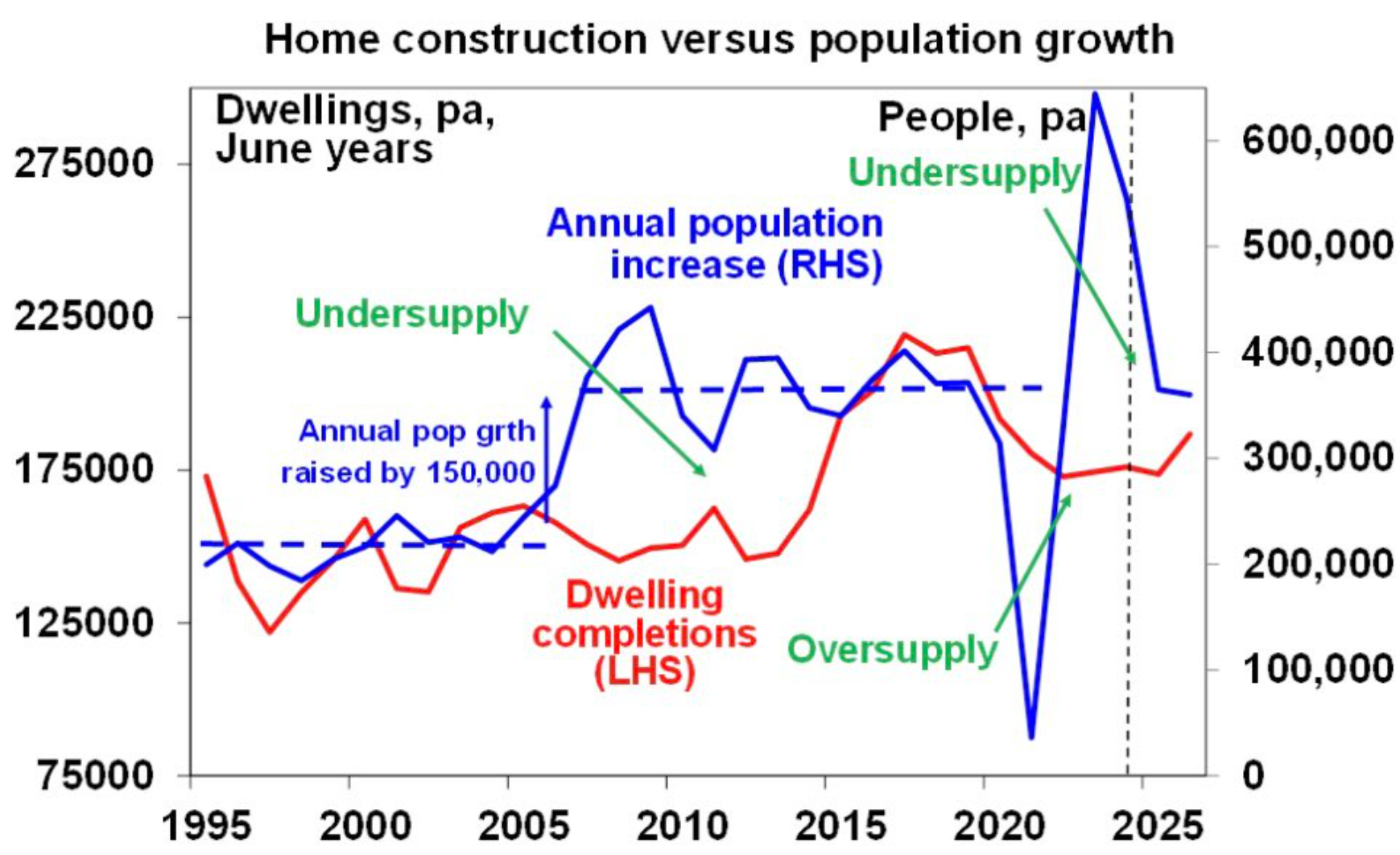
Oliver estimated that Australia’s cumulative housing shortage is between 200,000 and 300,000 dwellings.
“Australian housing is chronically undersupplied”, Oliver wrote in July.
“This has been the case since the mid-2000s when immigration levels, and hence population growth, surged and the supply of new homes did not keep up. Our assessment is that the accumulated housing shortfall (the green line in the next chart) is around 200,000 dwellings at least and possibly 300,000 depending on what is assumed in terms of the number of people per household”.
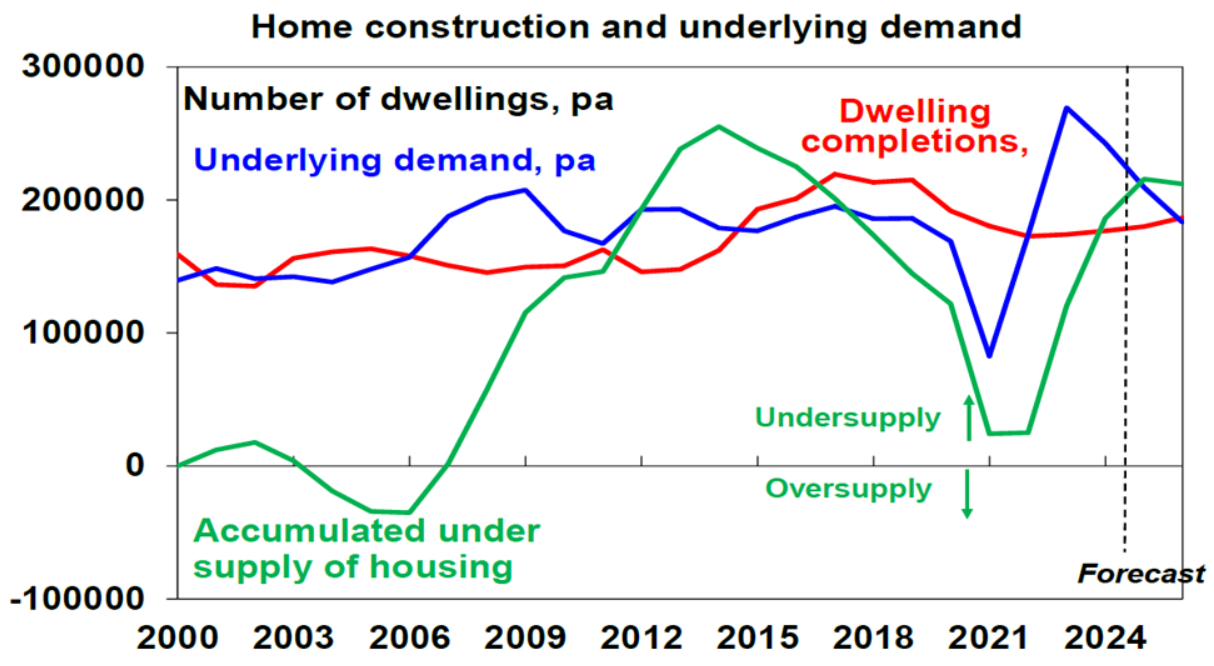
The federal National Housing Supply and Affordability Council (NHSAC) projects that Australia’s housing shortage will worsen by 79,000 over the next five years as population demand continues to exceed supply.
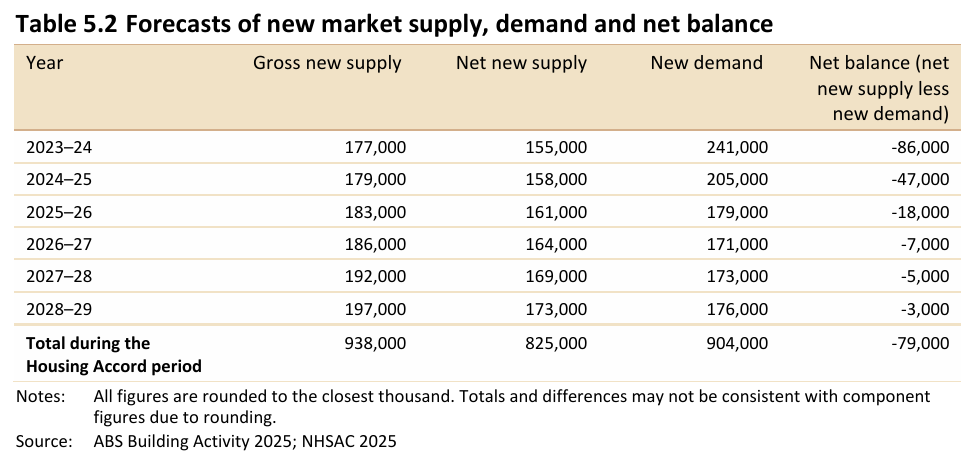
However, NSAC’s sensitivity analysis projected a surplus of around 40,000 homes after five years if population growth is just 15% less than forecast.
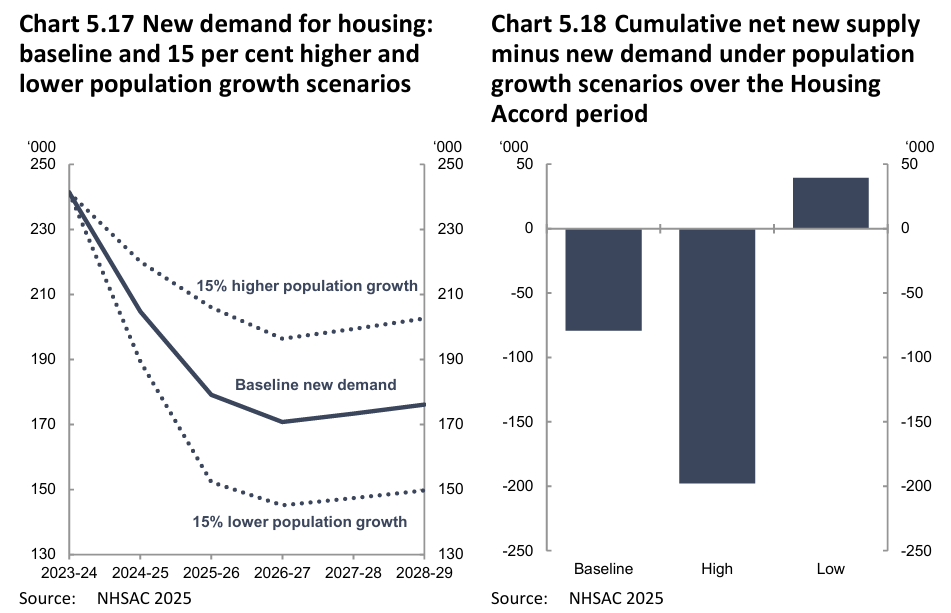
India is easily Australia’s largest source of migrants, as illustrated by the ABS chart below:
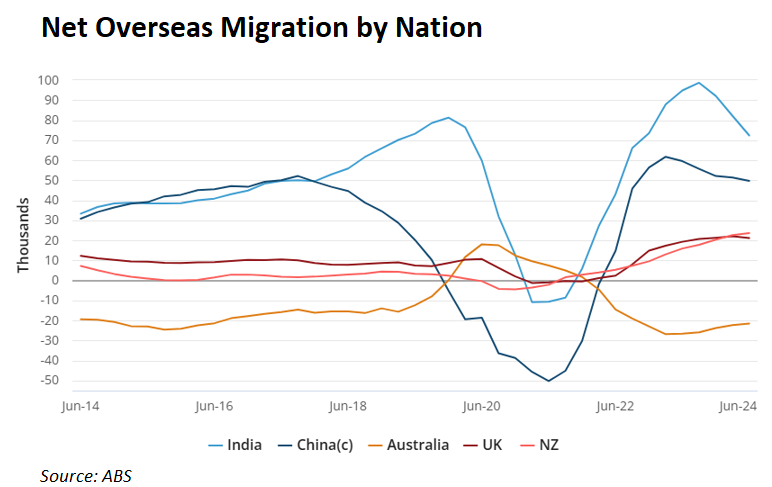
In recent years, the federal government has signed three pacts with India that make it easier for Indians to work and live in Australia, namely:
- The Australia-India Economic Cooperation and Trade Agreement (ECTA), signed by the former Coalition government late in its final term.
- The Australia-India Migration and Mobility Partnership Agreement, signed by the Albanese government in its first term.
- The Mechanism for Mutual Recognition of Qualifications, signed by the Albanese government in its first term.
Labor presumably wants more Indian migration because the Indian diaspora overwhelmingly votes for Labor.
- A 2022 survey conducted by the Carnegie Endowment for International Peace found that in the 2022 federal election, Indian migrants voted 58:34 for Labor over the Coalition.
- Pollster Kos Samaris openly stated that 85% of the Indian diaspora voted for Labor at the recent federal election.
With the Indian migration spigot well and truly open and Australia’s housing shortage worsening by the day, the Albanese government is reportedly working on a deal to bring Indians to Australia to build one million homes. From the Economic Times of India:
Union Minister Piyush Goyal on Sunday said that India is in “deep negotiations” to create 1 million homes in Australia and has reached out to the UAE for financing the project.
The Commerce and Industry Minister said that this is a project worth $500 billion.
“I am in deep negotiation with my counterpart in Australia to create 1 million homes. 1 million homes. Anybody wants to do the maths? A million homes in Australia would be at least USD 500 billion opportunity,” Goyal said while speaking in Mumbai.
However, Goyal did not reveal the detail of the project like the location in Australia, the exact spending by Canberra on it, or India’s role in the project.
Goyal further said India is proposing to allow Indian workers to get trained in Australia on necessary skill sets required to build homes as per local standards and create the housing…
This reads like satire but has been reported in the legitimate Indian news site, The Economic Times, alongside the Hindustan Times, the Business Standard, and others.
If true, this would be a highly cynical and disturbing policy from the Albanese government.
Instead of simply slowing the flow of immigration to balance population demand with the supply of housing, infrastructure, and services, the Albanese government would be seeking more Indian migration to build homes for Indian migrants while bolstering Labor’s vote.
Update 4.30pm: I have contacted Trade Minister Don Farrell’s office to confirm whether this story is true. I am waiting to hear back.
Update 6.45pm: Government sources say this plan has not been raised with them.
Update 9.45am 2/9/2025: A video has emerged on Twitter (X) of senior Indian Minister Piyush Goyal spruiking the plan for “hundreds of thousands” of Indians to build Australian homes:

